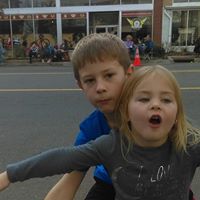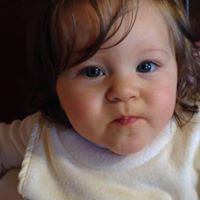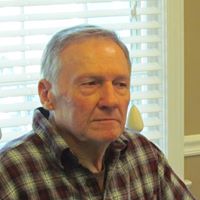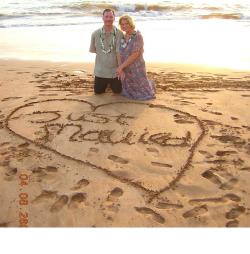Deborah Marie Lambert
age ~49
from San Francisco, CA
- Also known as:
-
- Deborah M Lambert
- Debbie Lambert
- Debra Lambert
- Deborah Artico
- Phone and address:
- 1177 Guerrero St, San Francisco, CA 94110
Deborah Lambert Phones & Addresses
- 1177 Guerrero St, San Francisco, CA 94110
- 55 Page St APT 214, San Francisco, CA 94102
- Stinson Beach, CA
- Honolulu, HI
- Aiea, HI
- 46-393 Nahewai St, Kaneohe, HI 96744
- Marina, CA
- Beaverton, OR
- Palo Alto, CA
Work
-
Company:Deborah Lambert
-
Address:11022 Se 18 St
-
Phones:3606192739
Education
-
School / High School:OTIS College of Art & Design2012
-
Specialities:Photography
Specialities
Property Management
Real Estate Brokers

Deborah Lambert, Van WA
view sourceSpecialties:
Property Management
Work:
Deborah Lambert
11022 Se 18 St
3606192739 (Office)
11022 Se 18 St
3606192739 (Office)
Isbn (Books And Publications)

Antique Collector's Directory of Period Detail: How to Identify the Kye Characteristics, Shapes, and Forms of Period Styles
view sourceAuthor
Deborah Lambert
ISBN #
0764151673

Helping Adolescents with Learning and Behavior Problems
view sourceAuthor
Deborah L. Lambert
ISBN #
0675205115
Resumes

Instructor
view sourceLocation:
San Francisco, CA
Industry:
Higher Education
Work:
San Francisco State University
Instructor
Els Educational Services, Inc
Esl Teacher
Instructor
Els Educational Services, Inc
Esl Teacher

Deborah Lambert
view source
Deborah Lambert
view source
Deborah Lambert
view source
Deborah Lambert
view source
Deborah Lambert
view sourceSkills:
Microsoft Word
Microsoft Excel
Customer Service
Powerpoint
Microsoft Office
Windows
English
Research
Microsoft Excel
Customer Service
Powerpoint
Microsoft Office
Windows
English
Research

Director Of Student Assustance
view sourceWork:
Director of Student Assustance

Deborah Lambert
view sourceName / Title
Company / Classification
Phones & Addresses
DUTTON LAMBERT CONSULTING, LLC
Us Patents
-
Key Fob With Valet And Car Locator Feature
view source -
US Patent:6518882, Feb 11, 2003
-
Filed:Sep 25, 2001
-
Appl. No.:09/962061
-
Inventors:Susan Johnson - Rochester MI
Tejas Desai - Sterling Heights MI
Deborah Marie Lambert - San Francisco CA
Jonathan Clark - Provo UT
Jeralyn Reese - Pasadena CA -
Assignee:Siemens VDO Automotive Corporation - Auburns Hills MI
-
International Classification:G08B 108
-
US Classification:340539, 340507, 340426, 3404255
-
Abstract:An improved key fob and key combination allows the mechanical key to be removed from the key fob and given to a valet attendant. The key is provided with a mechanical latch which may be easily removed from the key fob. When the key is removed, secured areas on the vehicle are locked. Moreover, the vehicle has limited operation when the mechanical key is not received with the key fob. In a second feature of this invention, a locator function on the key fob provides an indication of an approximate direction to a vehicle in a parking area. The key fob relies upon RF transmissions from the vehicle to determine an approximate direction to the vehicle.
-
Adjusting Alarms Based On Sleep Onset Latency
view source -
US Patent:20210345948, Nov 11, 2021
-
Filed:Jul 22, 2021
-
Appl. No.:17/382547
-
Inventors:- Cupertino CA, US
Wren N. Dougherty - San Francisco CA, US
Divya Nag - Palo Alto CA, US
Deborah M. Lambert - San Francisco CA, US
Stephanie Greer - San Francisco CA, US
Thomas R. Gruber - Santa Cruz CA, US -
Assignee:Apple Inc. - Cupertino CA
-
International Classification:A61B 5/00
H04W 4/70
G06Q 10/10
G08B 21/06
H04M 1/72451
H04L 29/08 -
Abstract:In some implementations, a mobile device can adjust an alarm siting based of the sleep onset latency duration detected for a user of the mobile device. For example, sleep onset latency can be the amount of time it takes for the user to fall asleep after the user attempts to go to sleep (e.g., goes to bed). The mobile device can determine when the user intends or attempts to go to sleep based on detected sleep ritual activities. Sleep ritual activities can include those activities user performs in preparation for sleep. The mobile device can determine when the user is asleep based on detected sleep signals (e.g., biometric data, sounds, etc.). In some implementations, the mobile device can determine recurring patterns of long or short sleep onset latency and present suggestions that might help the user sleep better or feel more rested.
-
Adjusting Alarms Based On Sleep Onset Latency
view source -
US Patent:20200345298, Nov 5, 2020
-
Filed:Jul 21, 2020
-
Appl. No.:16/934983
-
Inventors:- Cupertino CA, US
Wren N. Dougherty - San Francisco CA, US
Divya Nag - Palo Alto CA, US
Deborah M. Lambert - San Francisco CA, US
Stephanie Greer - San Francisco CA, US
Thomas R. Gruber - Santa Cruz CA, US -
Assignee:Apple Inc. - Cupertino CA
-
International Classification:A61B 5/00
H04W 4/70
G06Q 10/10
G08B 21/06
H04L 29/08
H04M 1/725 -
Abstract:In some implementations, a mobile device can adjust an alarm setting based on the sleep onset latency duration detected for a user of the mobile device. For example, sleep onset latency can be the amount of time it takes for the user to fall asleep after the user attempts to go to sleep (e.g., goes to bed). The mobile device can determine when the user intends or attempts to go to sleep based on detected sleep ritual activities. Sleep ritual activities can include those activities a user performs in preparation for sleep. The mobile device can determine when the user is asleep based on detected sleep signals (e.g., biometric data, sounds, etc.). In some implementations, the mobile device can determine recurring patterns of long or short sleep onset latency and present suggestions that might help the user sleep better or feel more rested.
-
Confirming Sleep Based On Secondary Indicia Of User Activity
view source -
US Patent:20190320972, Oct 24, 2019
-
Filed:Jul 3, 2019
-
Appl. No.:16/502254
-
Inventors:- Cupertino CA, US
Roy J. Raymann - Carlsbad CA, US
Wren N. Dougherty - San Francisco CA, US
Divya Nag - Palo Alto CA, US
Deborah M. Lambert - San Francisco CA, US
Stephanie M. Greer - San Francisco CA, US
Thomas R. Gruber - Santa Cruz CA, US -
Assignee:Apple Inc. - Cupertino CA
-
International Classification:A61B 5/00
A61B 5/11 -
Abstract:In some implementations, a provisional determination that a user of a first device is awake may be based on data indicating that the first device is being used. Also, sleep sounds associated with a human sleeping may be detected, and sleep sound information corresponding to the user may be obtained. Next, the detected sleep sounds may be compared to the sleep sound information, and a determination may be made as to whether the detected sleep sounds are attributable to the user based on the comparison of the detected sleep sounds and the sleep sound information. In addition, the provisional determination that the user is awake may be revised to indicate that the user is sleeping in response to a determination that the detected sleep sounds are being performed by the user in order to provide a more accurate sleep determination for the user.
-
Facilitating Restful Sleep Using Reminders
view source -
US Patent:20190213060, Jul 11, 2019
-
Filed:Mar 14, 2019
-
Appl. No.:16/353784
-
Inventors:- Cupertino CA, US
Wren N. Dougherty - San Francisco CA, US
Divya Nag - Palo Alto CA, US
Deborah M. Lambert - San Francisco CA, US
Stephanie M. Greer - San Francisco CA, US
Thomas R. Gruber - Santa Cruz CA, US -
Assignee:Apple Inc. - Cupertino CA
-
International Classification:G06F 9/54
G06F 3/01
G08B 5/22 -
Abstract:In some implementations, a computing device may detect that a user of the computing device intends to sleep. The computing device may cause a reminder notification to be presented on a display of the computing device that prompts the user to prepare one or more secondary devices for sleep. The computing device may obtain, for each of the one or more secondary devices, a desired state for sleep specified by the user. The computing device may cause, for each of the one or more secondary devices, a current state to change to the desired state for sleep. In some implementations, the user activities may be detected by receiving sensor data from one or more sensor devices of the computing device and identifying the user activities based on the received sensor data. In some implementations, the computing device may automatically change the current state to the desired state for sleep.
-
Adjusting Alarms Based On Sleep Onset Latency
view source -
US Patent:20180317839, Nov 8, 2018
-
Filed:Jul 18, 2018
-
Appl. No.:16/038623
-
Inventors:- Cupertino CA, US
Wren N. Dougherty - San Francisco CA, US
Divya Nag - Palo Alto CA, US
Deborah M. Lambert - San Francisco CA, US
Stephanie Greer - San Francisco CA, US
Thomas R. Gruber - Santa Cruz CA, US -
Assignee:Apple Inc. - Cupertino CA
-
International Classification:A61B 5/00
G08B 21/06
G06Q 10/10
H04M 1/725
H04L 29/08
H04W 4/70 -
Abstract:In some implementations, a mobile device can adjust an alarm setting based on the sleep onset latency duration detected for a user of the mobile device. For example, sleep onset latency can be the amount of time it takes for the user to fall asleep after the user attempts to go to sleep (e.g., goes to bed). The mobile device can determine when the user intends or attempts to go to sleep based on detected sleep ritual activities. Sleep ritual activities can include those activities a user performs in preparation for sleep. The mobile device can determine when the user is asleep based on detected sleep signals (e.g., biometric data, sounds, etc.). In some implementations, the mobile device can determine recurring patterns of long or short sleep onset latency and present suggestions that might help the user sleep better or feel more rested.
-
Adjusting Alarms Based On Sleep Onset Latency
view source -
US Patent:20180042547, Feb 15, 2018
-
Filed:Oct 24, 2017
-
Appl. No.:15/792678
-
Inventors:- Cupertino CA, US
Wren N. Dougherty - San Francisco CA, US
Divya Nag - Palo Alto CA, US
Deborah M. Lambert - San Francisco CA, US
Stephanie Greer - San Francisco CA, US
Thomas R. Gruber - Santa Cruz CA, US -
International Classification:A61B 5/00
H04L 29/08
G06Q 10/10
G08B 21/06
H04W 4/00
H04M 1/725 -
Abstract:In some implementations, a mobile device can adjust an alarm setting based on the sleep onset latency duration detected for a user of the mobile device. For example, sleep onset latency can be the amount of time it takes for the user to fall asleep after the user attempts to go to sleep (e.g., goes to bed). The mobile device can determine when the user intends or attempts to go to sleep based on detected sleep ritual activities. Sleep ritual activities can include those activities a user performs in preparation for sleep. The mobile device can determine when the user is asleep based on detected sleep signals (e.g., biometric data, sounds, etc.). In some implementations, the mobile device can determine recurring patterns of long or short sleep onset latency and present suggestions that might help the user sleep better or feel more rested.
-
Adjusting Alarms Based On Sleep Onset Latency
view source -
US Patent:20170238864, Aug 24, 2017
-
Filed:May 9, 2017
-
Appl. No.:15/590805
-
Inventors:- Cupertino CA, US
Wren N. Dougherty - San Francisco CA, US
Divya Nag - Palo Alto CA, US
Deborah M. Lambert - San Francisco CA, US
Stephanie Greer - San Francisco CA, US
Thomas R. Gruber - Santa Cruz CA, US -
International Classification:A61B 5/00
H04W 4/00
H04L 29/08
H04M 1/725
G06Q 10/10
G08B 21/06 -
Abstract:In some implementations, a mobile device can adjust an alarm setting based on the sleep onset latency duration detected for a user of the mobile device. For example, sleep onset latency can be the amount of time it takes for the user to fall asleep after the user attempts to go to sleep (e.g., goes to bed). The mobile device can determine when the user intends or attempts to go to sleep based on detected sleep ritual activities. Sleep ritual activities can include those activities a user performs in preparation for sleep. The mobile device can determine when the user is asleep based on detected sleep signals (e.g., biometric data, sounds, etc.). In some implementations, the mobile device can determine recurring patterns of long or short sleep onset latency and present suggestions that might help the user sleep better or feel more rested.
License Records
Deborah Lambert
License #:
RN24585 - Active
Category:
Nursing
Issued Date:
Sep 1, 1983
Expiration Date:
Mar 1, 2019
Type:
Registered Nurse

Deborah Hopkins Lambert
view source
Deborah Harrison Lambert
view source
Deborah Catoe Lambert
view source
Deborah Lambert Jennings
view source
Deborah Lambert Woods
view source
Deborah Lambert Roudebush
view source
Deborah Embry Lambert
view source
Deborah Wiley Lambert
view sourceClassmates

Deborah Burlingame (Lamb...
view sourceSchools:
Lee Elementary School Portland OR 1968-1977
Community:
Martin Gredvig, Patricia Patty, Stewart Patey, Christine Teel
Biography:
Life comes at you fast just like the commercial says! Glen and I are celebrating 6 ...

Deborah Burkhart (Lambert)
view sourceSchools:
Clarenceville High School Livonia MI 1967-1971
Community:
Ray Smith, Mary Flores

Deborah Lambert (Jones)
view sourceSchools:
Satsuma High School Satsuma AL 1963-1967
Community:
Kevin Jordan, Mike Holderfield

Deborah Lambert
view sourceSchools:
L'Anse High School L'anse MI 1981-1985
Community:
Paul Erickson

Deborah Lambert
view sourceSchools:
Monroeville High School Monroeville OH 1969-1973
Community:
Gale Gardner, Beth Diringer, Rocky Hamilton, Katharine Parsons

Deborah Lambert
view sourceSchools:
Owens Special School Charleston WV 1957-1964, Horace Mann Middle School Charleston WV 1964-1967, Fairfax Hall High School Waynesboro VA 1967-1970
Community:
Sharon Peterman, Angela Lucas, Linda Larkins

Deborah Lambert
view sourceSchools:
Birmingham High School Birmingham MI 1972-1976
Community:
Janet Webb, Gordon Fox, Ward Tollzien

Deborah Lambert
view sourceSchools:
Perry High School Massillon OH 1985-1989
Community:
Randall Miller, Debbie Jeffears
Flickr
Youtube
Plaxo

Deborah Lambert
view sourceVoorheesville, NYCore Designer I at Atlas Copco Past: Mechanical Designer at QuEST Global
Get Report for Deborah Marie Lambert from San Francisco, CA, age ~49













